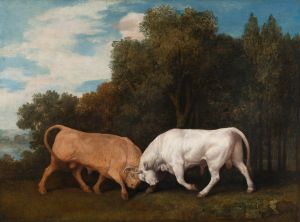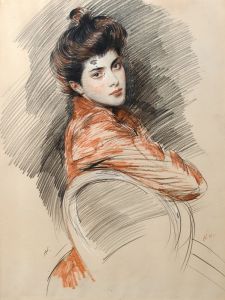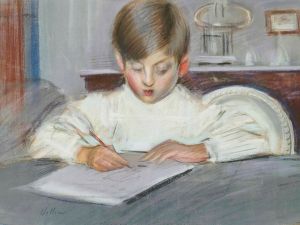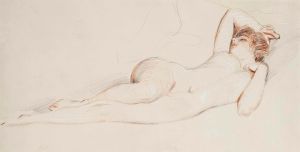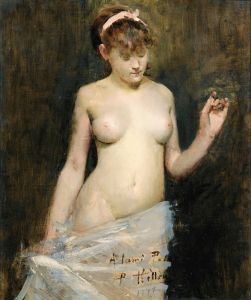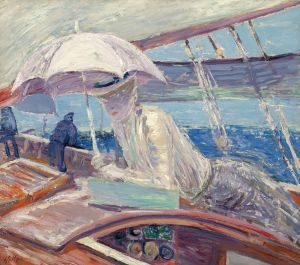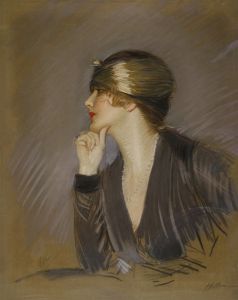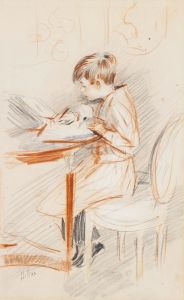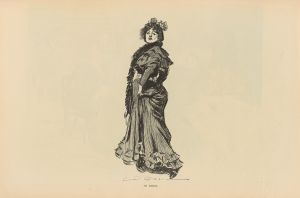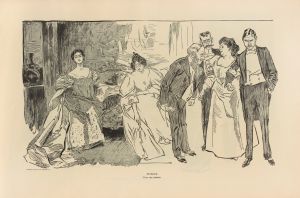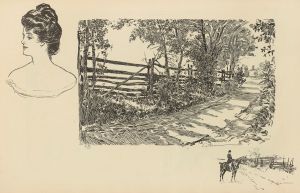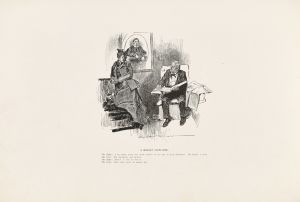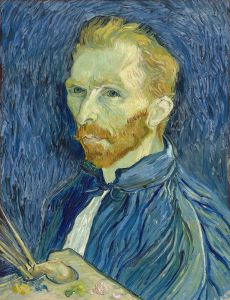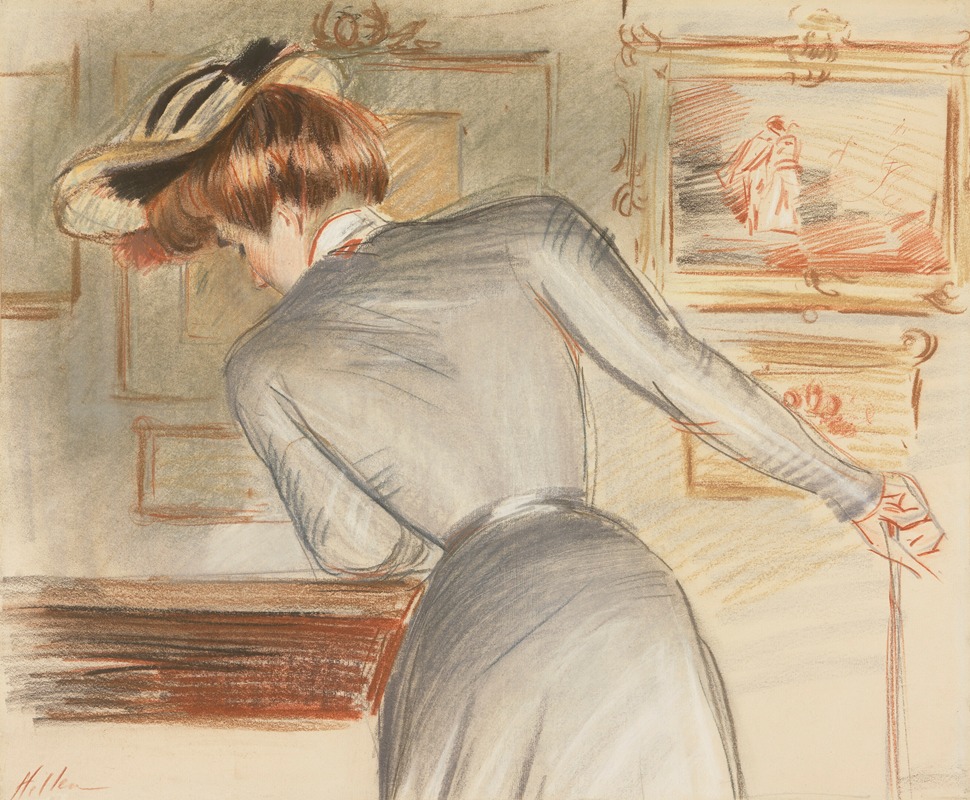
A l’exposition des Watteau
A hand-painted replica of Paul César Helleu’s masterpiece A l’exposition des Watteau, meticulously crafted by professional artists to capture the true essence of the original. Each piece is created with museum-quality canvas and rare mineral pigments, carefully painted by experienced artists with delicate brushstrokes and rich, layered colors to perfectly recreate the texture of the original artwork. Unlike machine-printed reproductions, this hand-painted version brings the painting to life, infused with the artist’s emotions and skill in every stroke. Whether for personal collection or home decoration, it instantly elevates the artistic atmosphere of any space.
Paul César Helleu was a French artist known for his elegant portraits and depictions of fashionable society during the Belle Époque period. One of his notable works is "A l’exposition des Watteau," which translates to "At the Watteau Exhibition." This painting reflects Helleu's fascination with both the art of the past and the contemporary society of his time.
Helleu was born on December 17, 1859, in Vannes, France. He studied at the École des Beaux-Arts in Paris and became a prominent figure in the art world, particularly known for his drypoint etchings and portraits of women. His style was characterized by a light, graceful touch and an ability to capture the elegance and sophistication of his subjects.
"A l’exposition des Watteau" is an example of Helleu's interest in the Rococo artist Jean-Antoine Watteau, who was renowned for his depictions of aristocratic leisure and fêtes galantes. Watteau's work was celebrated for its delicate color palette and the dreamlike quality of its scenes, which often depicted figures in idyllic landscapes engaged in leisurely pursuits.
Helleu's painting captures a scene at an exhibition dedicated to Watteau's works. It reflects the late 19th-century revival of interest in Rococo art, which had fallen out of favor during the Neoclassical and Romantic periods. By the time Helleu painted this work, there was a renewed appreciation for the charm and elegance of the Rococo style, and exhibitions of Watteau's work were popular among art enthusiasts.
In "A l’exposition des Watteau," Helleu portrays a group of elegantly dressed individuals, likely members of the Parisian elite, as they admire the works of Watteau. The painting is a testament to the enduring influence of Watteau's art and its ability to captivate audiences centuries after his death. Helleu's depiction of the exhibition scene is both a homage to Watteau and a reflection of the social dynamics of his own time.
Helleu's work is characterized by its attention to detail and the use of light to create a sense of atmosphere. In this painting, he employs a soft color palette and fluid brushstrokes to evoke the refined ambiance of the exhibition space. The figures in the painting are rendered with a sense of grace and poise, capturing the fashion and demeanor of the Belle Époque society.
Throughout his career, Helleu was associated with many prominent figures of his time, including Marcel Proust and John Singer Sargent. His work was celebrated for its ability to capture the essence of an era marked by elegance and cultural refinement. "A l’exposition des Watteau" is a prime example of Helleu's skill in portraying the intersection of art and society, highlighting the timeless appeal of Watteau's work and its resonance with contemporary audiences.
Helleu's legacy as an artist is marked by his contribution to the revival of interest in Rococo art and his ability to capture the spirit of his time. His works continue to be appreciated for their beauty and historical significance, offering a glimpse into the world of the Belle Époque and its enduring fascination with the art of the past.






